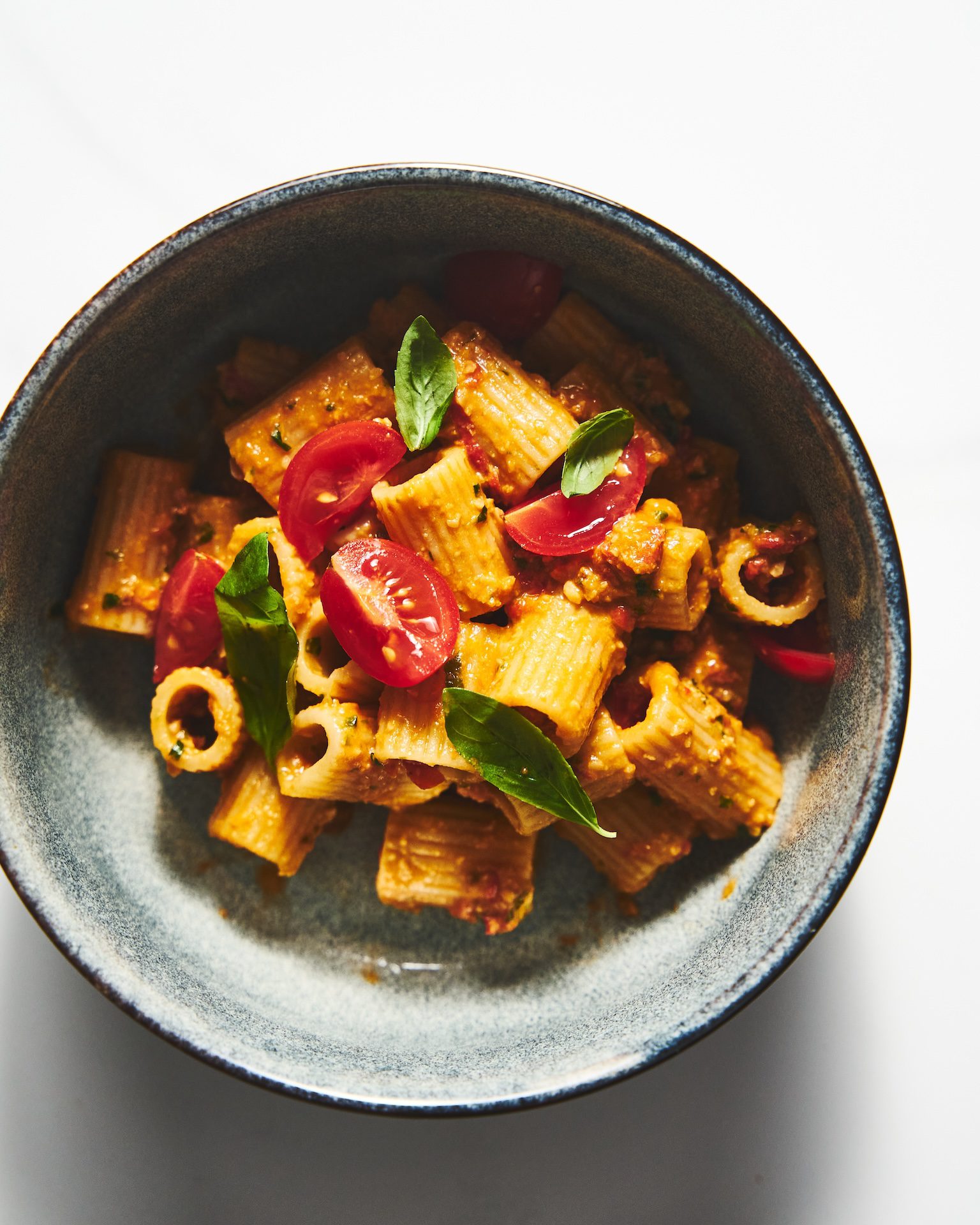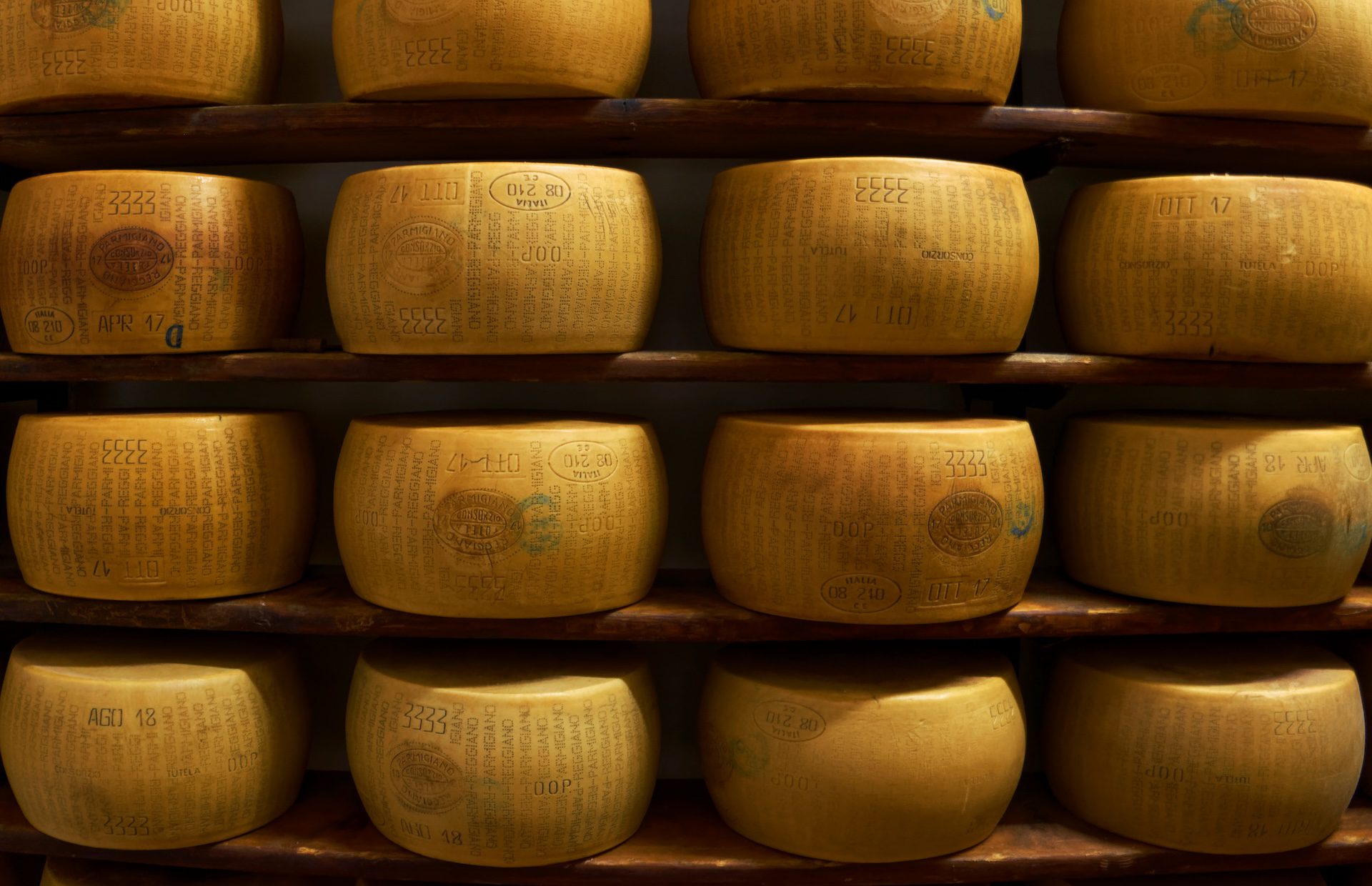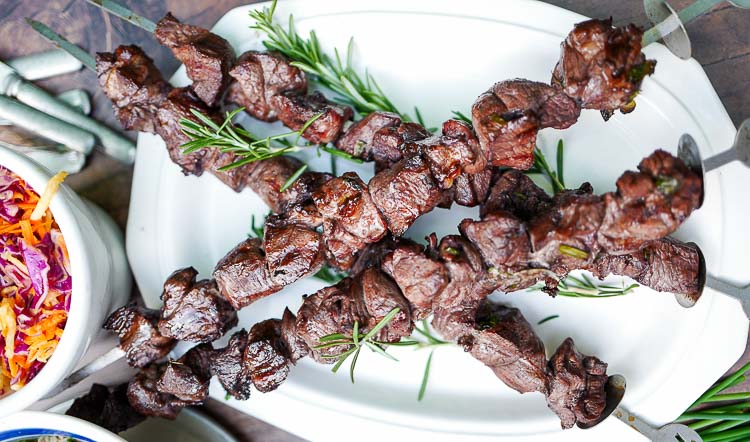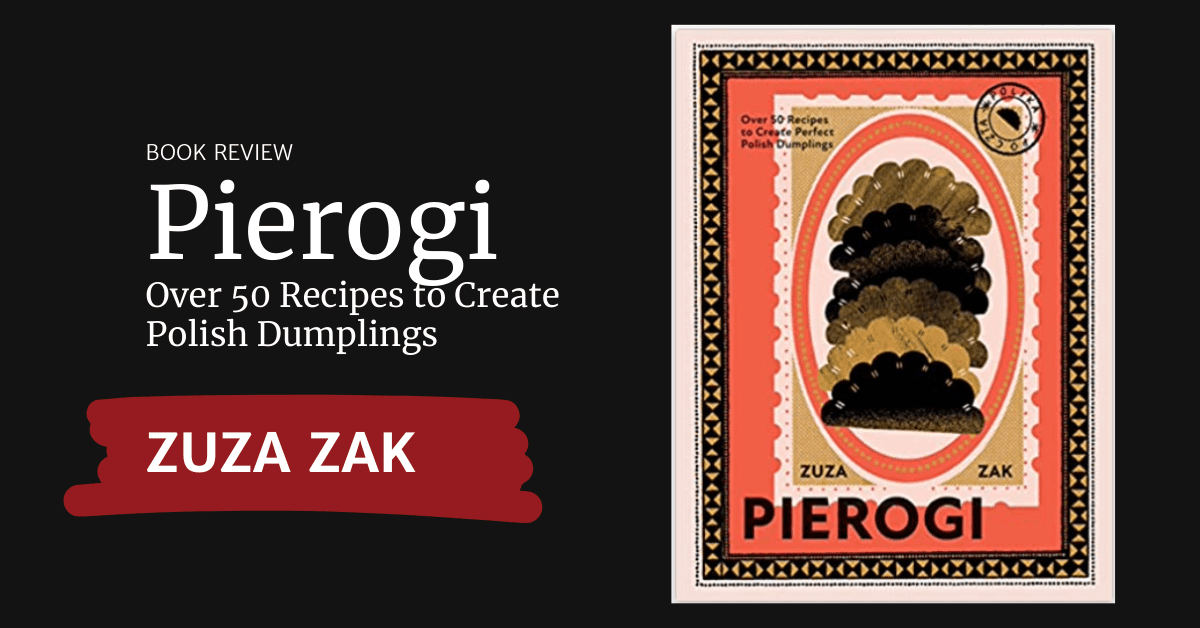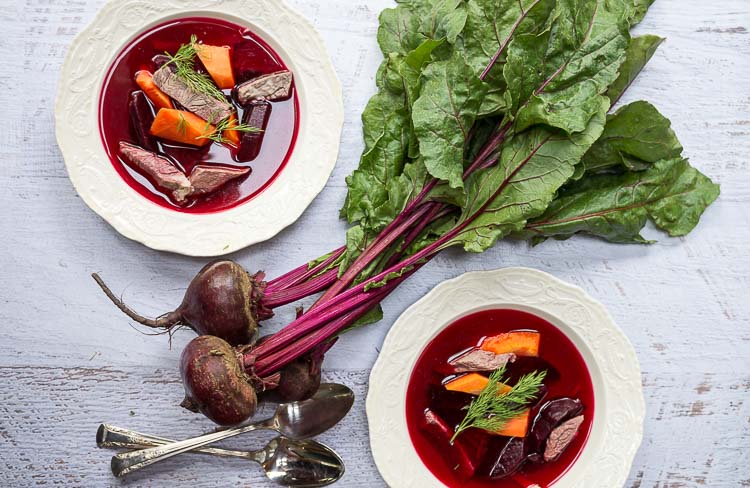
Simplicity is the secret to Liguria’s famous sauce, pesto Genovese, a very simple sauce which perfectly fuses the culinary bounty of the natural ingredients found in sun-kissed Cinque Terre coastline: extra virgin olive oil, fresh basil leaves, pine nuts, wild garlic, and tangy sea salt as the base. Sounds simple, but when they come together with a salty aged cheese such as Parmesan cheese or Pecorino Romano, the resulting nutty flavor is magical. This is one of the great masterpieces of Italian cuisine: mastering a good pesto sauce is easy and the best way to use up a glut of basil.
This post contains affiliate links, including links from the Amazon Associates programs. These links will direct you to products I recommend for further exploration and enjoyment of the topics I cover on my website and in my lectures. See more in the Privacy Policy below.
Pesto without the cheese freezes beautifully in a small glass jar or airtight container with a slick of olive oil on the top to seal it. Take advantage of a glut of basil in the summer to capture the fresh bounty to enjoy for later use. A hearty dish of pasta or a colorful and delicious sauce can be yours in an instant with just a packet of pasta and some good quality cheese!
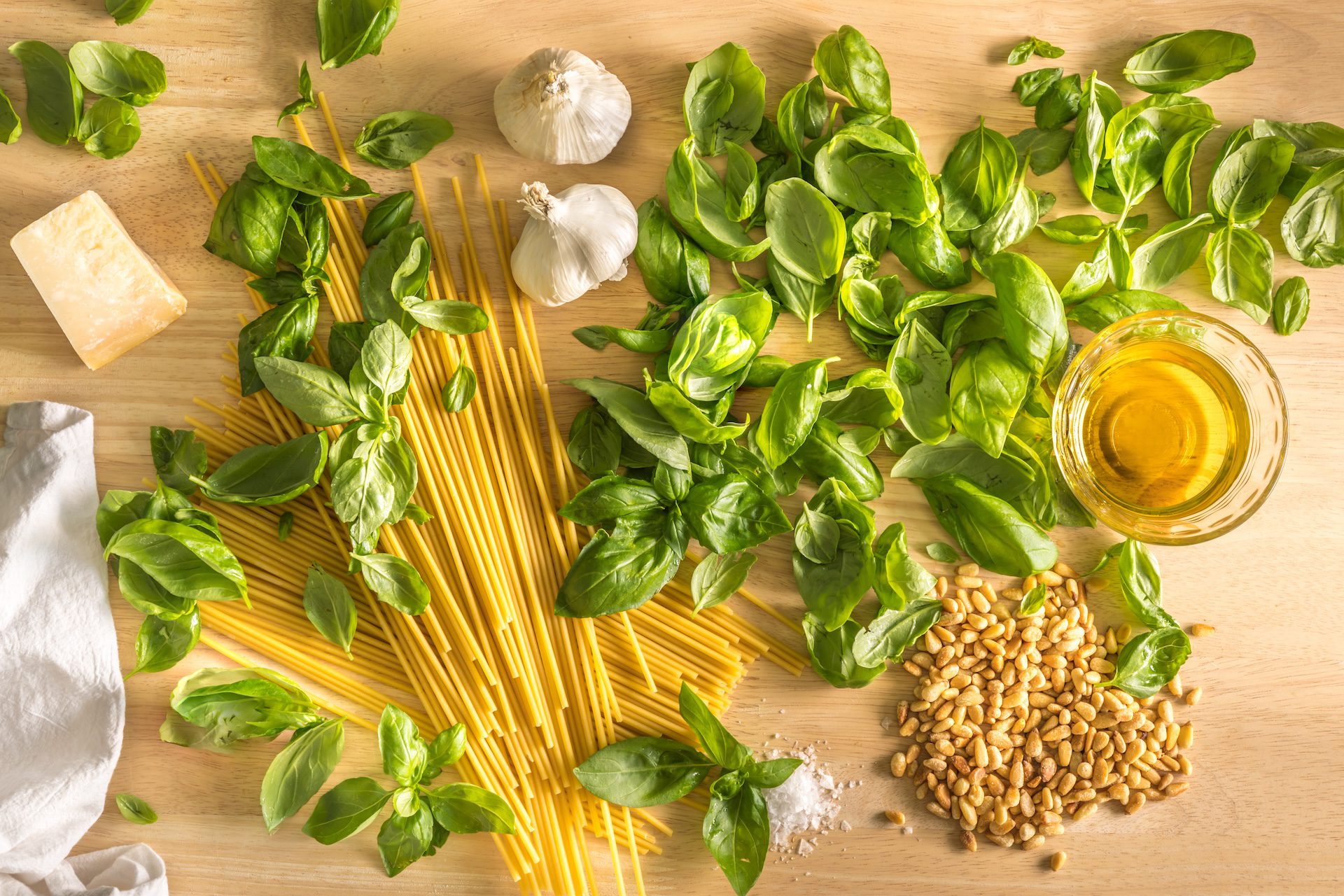
Ingredients for Pesto Alla Genovese | Photo credit: Martina Birnbam
Ingredients & Substitutions
Italians take their pesto seriously. In fact, there is even a Pesto Confraternity complete with a Grand Master, set up to establish the seven core ingredients of classic basil pesto:
- Fresh basil,
- Italian aged cheeses (the Confraternity specifies Parmigiano-Reggiano cheese and Sardinian pecorino fiore sardo cheese),
- European pine nuts,
- garlic,
- salt,
- Ligurian Extra Virgin Olive Oil
About Hard Italian Cheeses
The delectable hard cheeses of Italy have an almost alchemical aspect to them, able to emulsify a sauce into something silky and delicious. It is ironic to contemplate that the emerged from the ascetic monastic traditions of the early Middle Ages. Monks during this period tended to subsist on a very meager diet of coarse bread and legumes, with things like eggs and cheese very much seasonal treats, only permissible when the liturgical calendar did not mandate a fast.
The Cistercian and Benedictine monks of the Emilia Romagna hit upon a recipe for a cheese with a long shelf life — one that would transform Italian cuisine forever.
The monasteries of the plains between the towns of Parma and Reggio Emilia were dairy farmers, their cows benefiting from the lush pastureland of the region. The region also had easy access to salt from the Salsomaggiore, so it is not surprising that the monks turned to cheese making as early as 1200 CE. By the 14th century the hard cheese was famous throughout Italy and beyond. Today the EU and EEC uphold very strict regulations about what kinds of cheese can be named Parmigiana Reggiano, rooting it in the region itself meadows in the province of Reggio-Emilia, pastures between Bologna and the left of the Reno River or in Mantua to the South of the Po River. The cows used consist of the Reggiana, Rosse (red) or Longobardi (Lombard) breeds. These strict regulations have helped to maintain the cheese’s quality.
Good pesto must be paired with good cheese, so try to find the best quality you can — ideally with the DOP (PDO/Protected designation of Origin) at your local cheesemonger, speciality grocery stores, or online such as this reliable brand.
The History of Pesto Genovese
Pesto’s history dates back to one of the more illustrious moments of the Liguria region of Italy and the history of Genoa — a major player in the First Crusade. In 1097, 12 galleys and 1,200 soldiers from Genoa were led by two noblemen from prominent Genoese families: de Insula and Avvocato. The Genoese continued to use their famous fleet to transport Crusaders and provide naval support to them during the Siege of Antioch in 1098.

The Siege of Antioch | via Wikimedia Commons
The canny Genoese mariners soon realized that they could make a handsome profit by filling their empty ships with luxury goods from the Holy Land and sell them at a great profit at home. Thus began the first golden age of Genoa’s great trading empire.
More glory was to come with the Genoese warlord Guglielmo Embriaco, who took part in the conquest of Jerusalem. Legend says that Captain Bartolomeo Decotto was with Embriaco’s forces and, while in the Holy Land, he became fascinated with the basil plant. When he returned to Genoa, he brought basil seeds with him, hoping to use them for medical purposes. Somehow, the plants thrived in Genoa’s very poor soil, and soon the Ligurian hillsides turned bright green with the fragrant herb.
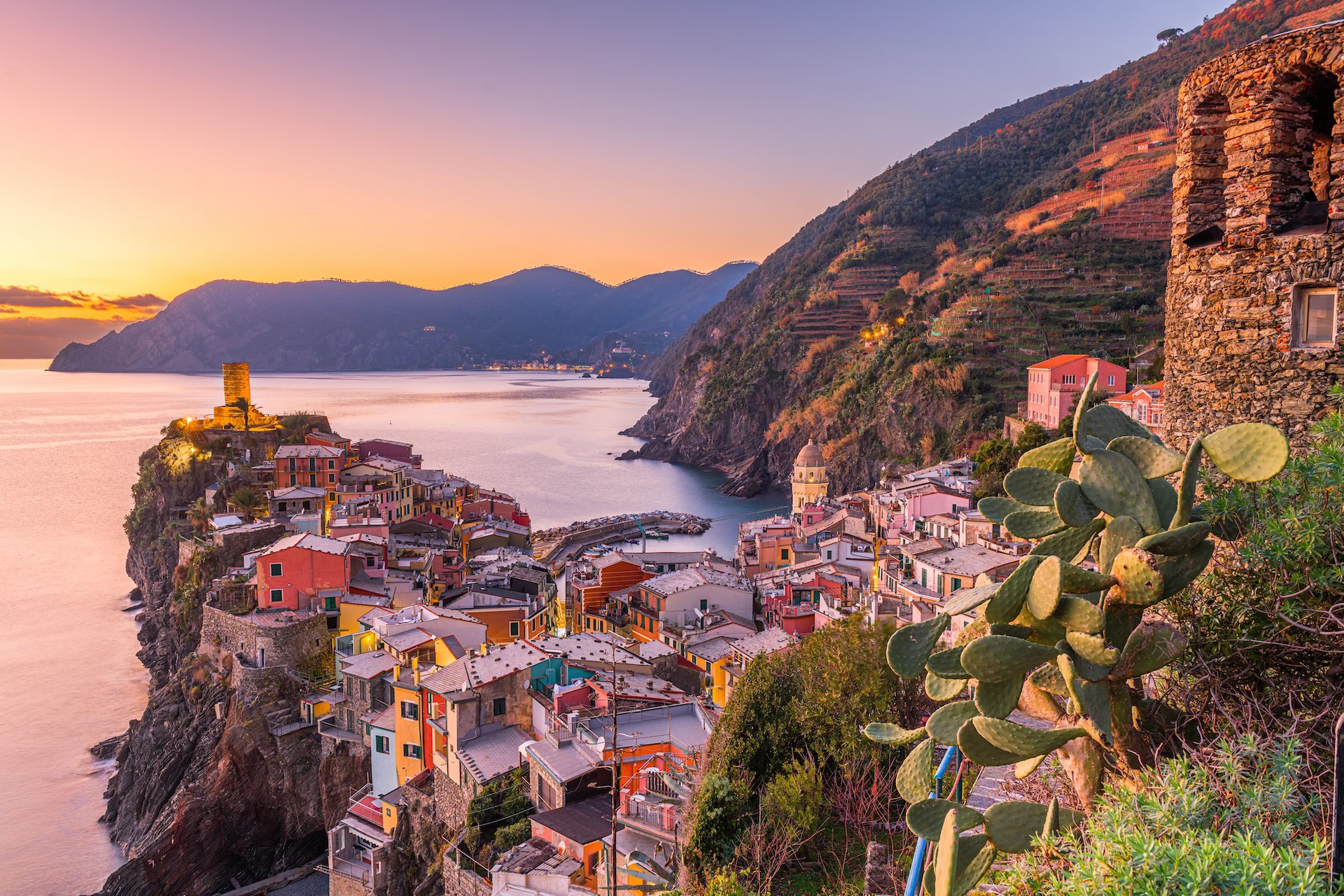
The Coast of Liguria | Photo Credit: Sean Pavone
It would not take long for the Genoese to add basil to the traditional garlic and nut paste, popular with sailors from antiquity. Virgil has a delightful description of a peasant farmer breakfasting on a garlic and walnut paste in his poem, “Moretum.” But once the basil arrived from the Holy Land, this became something far more palatable. Together with the region’s abundant sea salt, basil enhanced the condiment, which could be preserved with more salt and olive oil, making it ideal for long voyages, where it certainly helped to stave off scurvy.
The term pesto comes from the Italian verb “pestere” meaning “to pound,” and indeed the original method of preparation using a marble mortar and pestle to combine the ingredients into the rough paste is still considered the best way to achieve the desired texture. I confess I use a food processor if I am making a big batch, but if I’m whipping up a quick pesto, the mortar and pestle like this one is my preferred method.

The traditional method of making pesto with a mortar and pestle | Photo credit: marako85
Pesto alla Genovese
Equipment
Ingredients
- 4 cups of fresh basil leaves removed from their stems, washed and patted dry
- 5 garlic cloves finely minced
- 3/4- cup of pine nuts
- 1-1/2 cups of best quality extra virgin olive oil -- for the best flavor use Ligurian olive oil
- 1 Tbls of the best quality sea salt
- If serving immediately: 2/3 cups of Parmigiano-Reggiano and Sardinian pecorino cheeses combined.
- Instructions:
Instructions
- Allow the pesto to come to room temperature.
- Toast the pine nuts in a skillet until they are lightly browned and beginning to steam. Set aside to cool.
- Combine the garlic, pine nuts, basil and salt in a mortar and pestle and pound them until they combine, adding olive oil in small amounts until the mixture forms a rough paste.
- If using a food processor, put the pine nuts, salt, and basil into the base of the food processor fitted with a steel blade. Pulse to combine the ingredients 5-6 times before running the motor steadily as you pour the olive oil in a steady stream to combine until the mixture forms a rough paste.
- To store, decant the pesto into a clean glass jar and cover with 1/8-inch of olive oil to seal. Be aware that the strength of the salt will diminish during the freezing process, so do adjust the final seasoning for the desired taste.
- To combine the fresh pesto with pasta, bring a large pot of heavily salted water to a rolling boil. Cook the pasta according to package directions, minus one minute to ensure it is al dente.
- Decant 1-½ cups of the pasta water and set aside. Drain the pasta but do not rinse it.
- Return the al dente pasta to the pot and add the pesto and cheese to the pasta, then toss together with several tablespoons of the pasta water until the mixture comes together into a creamy texture.
- Serve with more grated cheese and a drizzle of olive oil.
Variations and Adaptations
While Pesto alla Genovese’s seven core ingredients are sacrosanct, you can certainly use the method as a template for other pesto-like condiments.
Sicily’s version of pesto includes tomatoes and swaps out the pine nuts for the region’s abundant almonds (see recipe below).
Before I leave home for a long cruise, I sweep out all the lingering lettuce and herbs in my fridge: rucola, parsley, dill, scallions, and basil. I combine them with garlic, almonds or cashews, lemon peel, salt and olive oil and process them. This mixture goes into jars and into the fridge for a ready-made flavor infusion for soups, stews, sandwiches, and pasta.
When wild garlic is in season, I make as much pesto as I can from this all-too fleeting springtime harvest, adding lemon zest as a foil.
When I first moved to Russia, purple basil was the more readily available type of basil, and I invented an easy pesto recipe for the ancient Roman walnut pesto with the purple basil and walnuts, a flavor pairing popular in Caucasian cuisines.
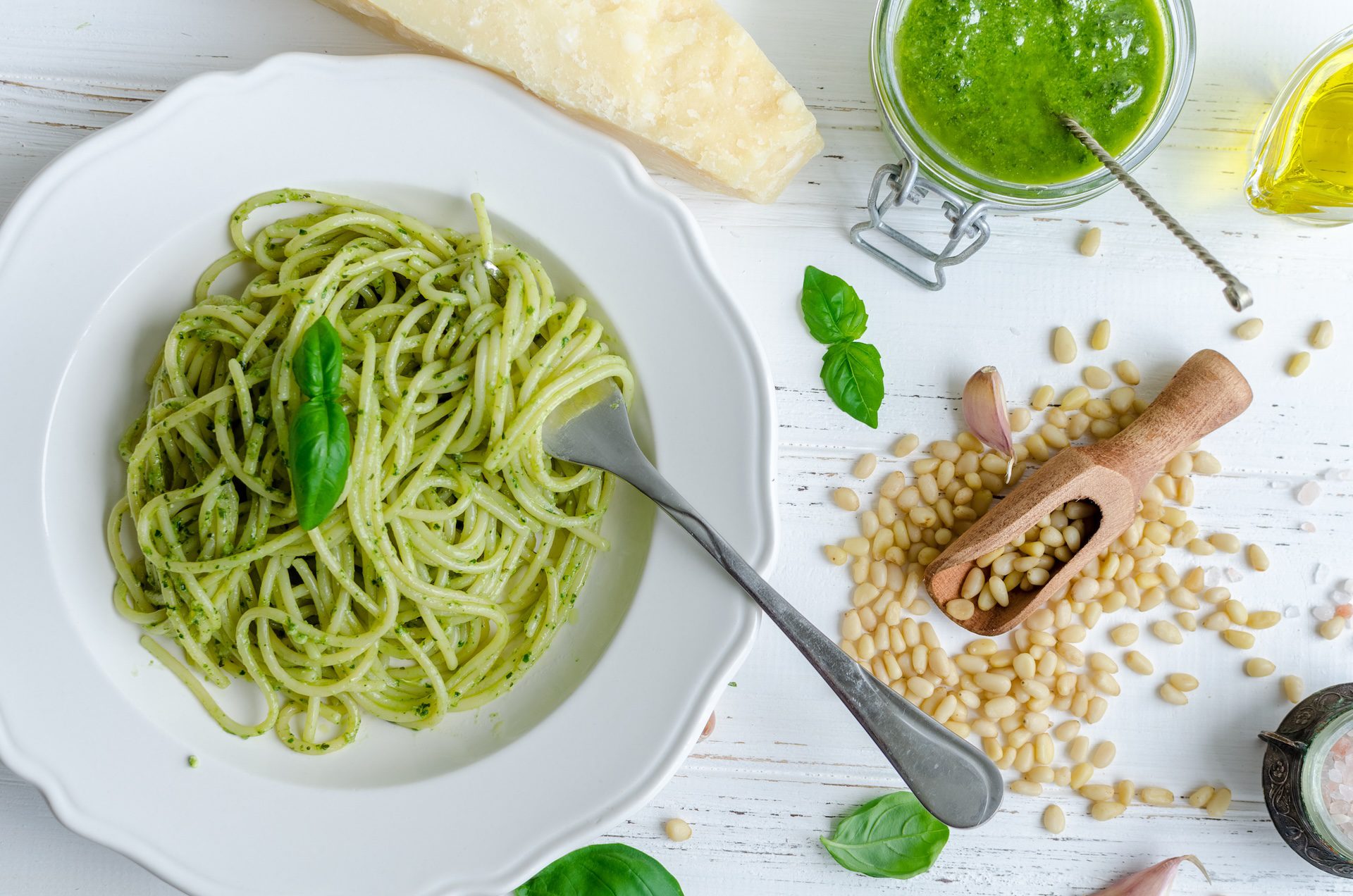
Pasta alla Genovese | Photo credit: Nelly Kovalchuk
What to Serve with Pesto?
Pesto is most commonly paired with traditional pasta, for a bright green dish that is sure to please! The pasta shape is entirely up to the chef’s preference; linguine works just as well as trofie pasta (my favorite shape for pesto) and pesto is certainly one of the better sauces for potato gnocchi.
Classic Italian basil pesto is a wonderful accompaniment to other kinds of cheese, including fresh mozzarella and sheep’s milk cheese as well as other Italian cheeses. Dilute it slightly with lemon juice and olive oil and drizzle over these cheeses to liven them up.
Grilled chicken thighs or poached salmon are wonderful accompaniments to a pasta dish made with pesto, but the match made in heaven is a platter of vine ripe tomatoes with just a splash of lemon juice, more fresh basil, roughly torn, a pinch of salt and sugar, drizzled with olive oil. Be sure to have a crusty loaf of bread on hand to soak up all the juices.
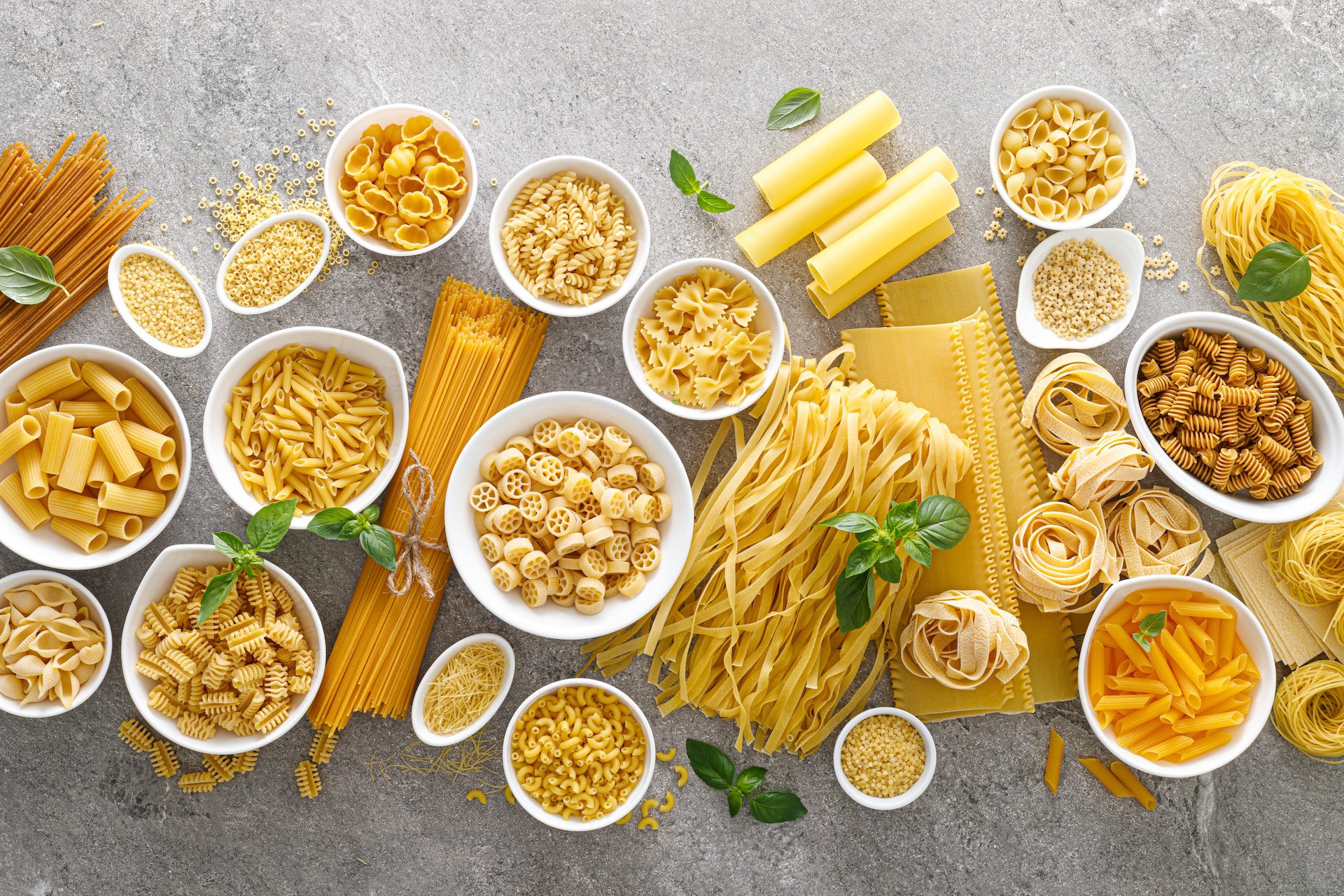
Photo Credit: Sea Wave
Pasta alla Trapanese
Sicily’s version of homemade basil pesto — Pesto alla Trapanese — is a speciality of the city of Trapani, where tomatoes and almonds are added to the hard cheeses, basil and garlic, for a pasta sauce that showcases the major ingredients of Southern Italy.
Pasta alla Trapanese
Equipment
Ingredients
- 3 cups of fresh basil stems removed, well washed and packed tight into the measuring cup.
- 4 cloves of garlic with the pale green shoot removed.
- 1 Tbsp of fine quality sea salt
- Table salt for treating the tomatoes
- ¾- cup of Extra Virgin Olive Oil
- ⅔- cup of blanched almonds.
- 2 cups of chopped fresh tomatoes with the seeds removed.
- 1 cup Parmigiano Reggiano Cheese grated
Instructions
- Place the tomatoes on a tray lined with several layers of paper towel. Sprinkle the tomatoes with table salt and set aside for 30-90 minutes. Pat the tomatoes dry with more paper towels.
- Place the salt, almonds, garlic, and 2 Tbls of olive oil in the bowl of a food processor fitted with a steel blade. Press the pulse button numerous times until this becomes a rough paste.
- Add the tomatoes and basil and continue to pulse until combined.
- Run the processor continuously as you use the hole in the funnel to drip olive oil into the pesto. Monitor the mixture to ensure it does not become too liquid.
- If you do not plan to consume the pesto right away, decant the mixture into clean glass jars or airtight containers, leaving ⅛-inch at the top. Pour olive oil to seal the mixture. Keep in the freezer for several months or in the refrigerator for 3-4 days.
- To prepare pasta with Pesto alla Trapanese, bring a large pot of well-salted water to a boil. Cook a package of short pasta according to package directions minus one minute to ensure it is al dente.
- Decant 1-½ cups of the pasta water and set aside before draining the pasta. Do not rinse the pasta.
- Return the pasta to the pot, and toss with the pesto, cheese, adding bits of the pasta water until the ingredients are combined, and the sauce is silky.
- Serve with more grated cheese and fresh cherry tomatoes, and more chopped basil.
